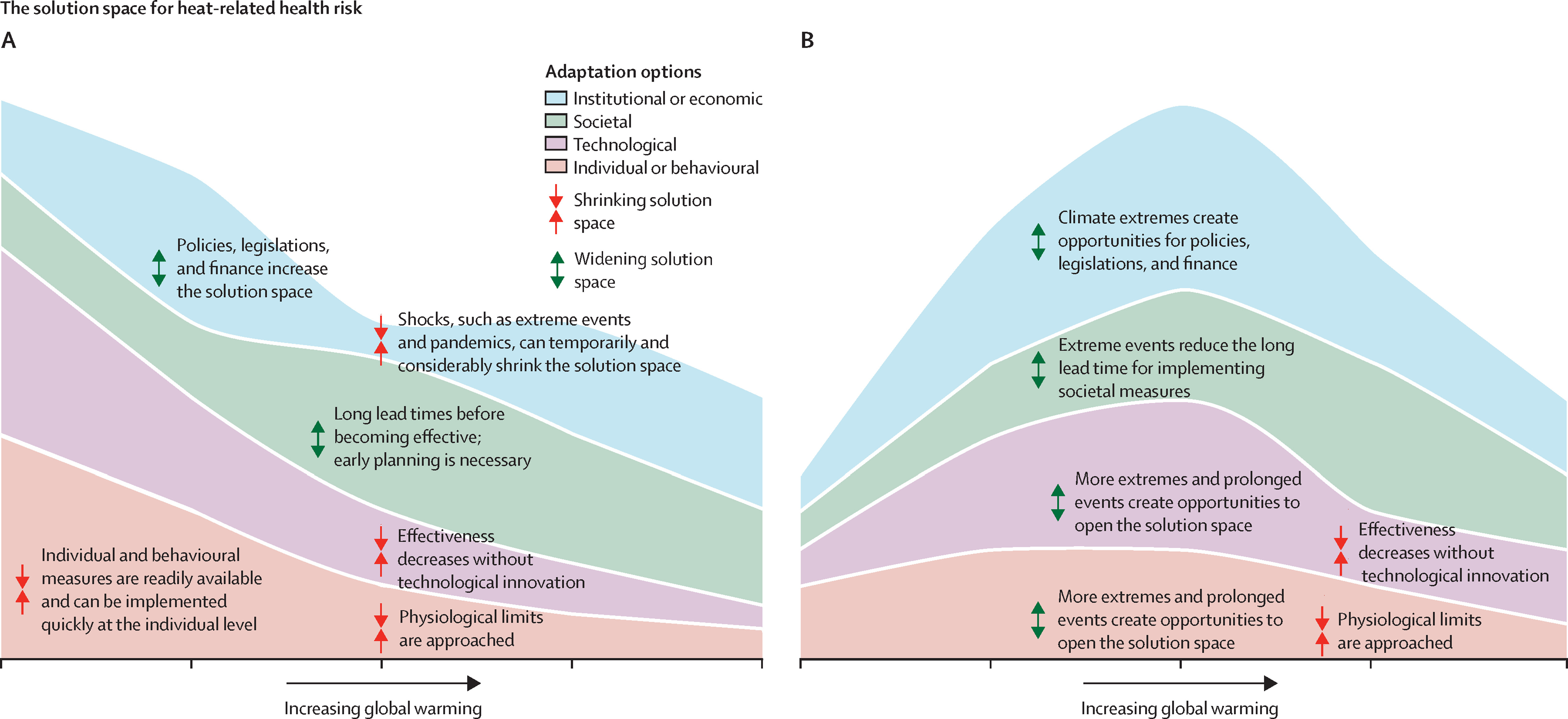Heat research and policy: integrated approaches are urgently needed
2023 was the hottest year on record worldwide. The past few years have also been marked by several extreme heatwaves, leading to massive health risks and increased mortality. Adaptation is now at the top of the global political climate agenda, on a par with mitigation. To make forward-looking, evidence-based decisions, we need to adopt an integrative perspective in research, argues a recent paper published in The Lancet Planetary Health. The authors outline six building blocks needed as part of a more integrated research framework.

How higher temperatures affect human health has been studied extensively, but there is a tendency to analyse these health risks in isolation. Often the most serious effects occur when combined with high humidity or air pollution. Therefore heat - health modelling approaches need to be more sensitive and inclusive of further building blocks (> Projected heat-related health risks).
A range of options have been identified and planned or even implemented to adapt to extreme heat, including technical, societal, behavioural and economic options. One example is to invest in urban greening to reduce the urban heat island effect (> Adaptation options).
But it is equally important to analyse whether these measures are having the desired effect. Do they work in the short or long term? Which population groups benefit most from them? What are the obstacles, such as high economic costs, political resistance, or lack of space? (> Feasibility and effectiveness of adaptation).
The six building blocks for a more integrated research frameworkProjected heat-related health risks |
Will some options have positive or negative impacts elsewhere, or could they become maladaptive over time? Urban green spaces not only reduce the heat island effect, but also improve mental health or provide opportunities for rainwater storage. At the same time, they may create reservoirs for new infectious diseases or take up expensive land for urban development (> Synergies, trade-offs, and co-benefits of adaptation).
Many adaptation options can only reduce risk up to a certain level of environmental change. For example, there are physiological limits to the extent to which the human body can effectively dissipate metabolic heat. The cooling effect of urban greening may not be sufficient to keep urban temperatures at levels that are adequate to protect human health (> Adaptation limits and residual risks). “How much residual risk society is willing to accept, and what gets prioritised is often a political choice,”, says Veruska Muccione, first author of the paper.
Finally, we need to understand and evaluate the mix and sequence of options. In some contexts, incremental changes to existing practices are needed, in other systemic changes are required. By means of solution space diagrams a range of opportunities and desired futures can be assessed, designed and evaluated (> Pathways of adaptation).
Solution space changes with increasing global warming
“We need to develop and finance integrated projects that combine the different building blocks and take a truly integrated perspective,” says Veruska Muccione. “And we have to acknowledge that understanding the problem better does not mean that implementing solutions is easy.”
Literature
Veruska Muccione, Robbert Biesbroek, Sherilee Harper, Marjolijn Haasnoot: Towards a more integrated research framework for heat-related health risks and adaptation
The Lancet Planetary Health, Volume 8, Issue 1, 2024, Pages e61-e67,
https://doi.org/10.1016/S2542-5196(23)00254-1
Image: DALL-E-2
Magdalena Seebauer
